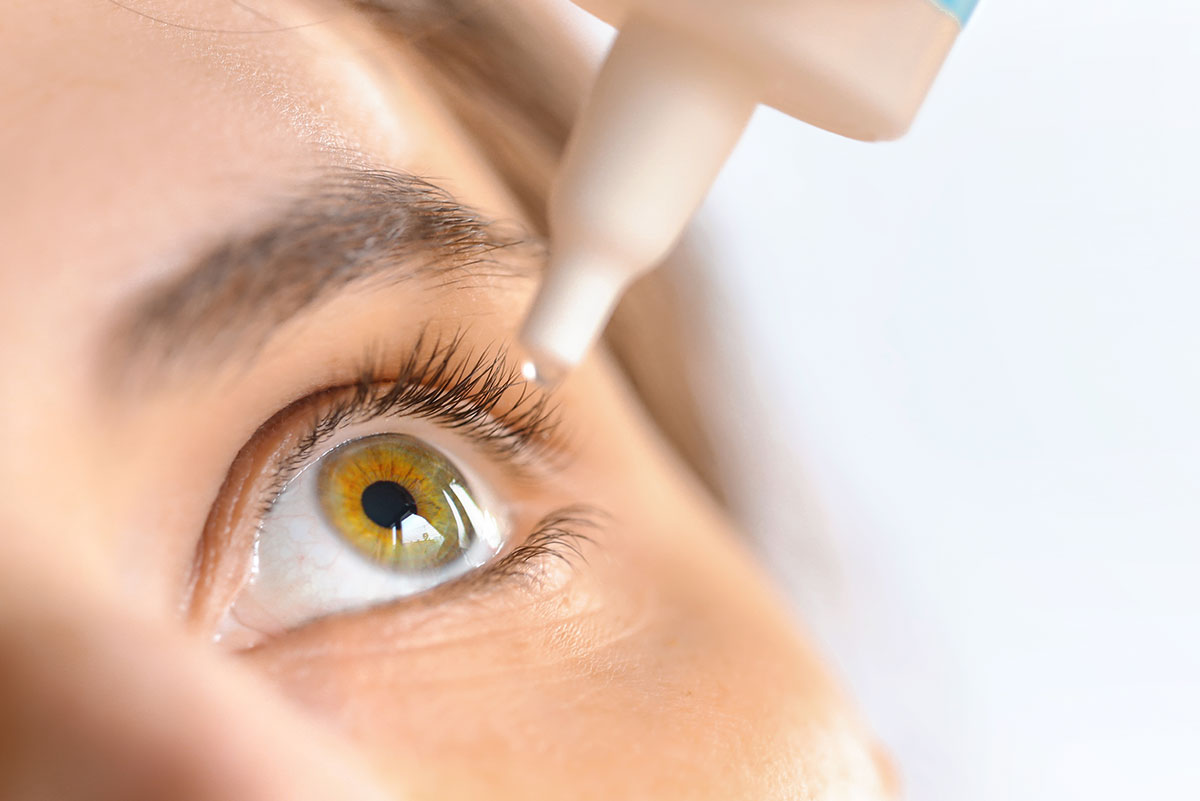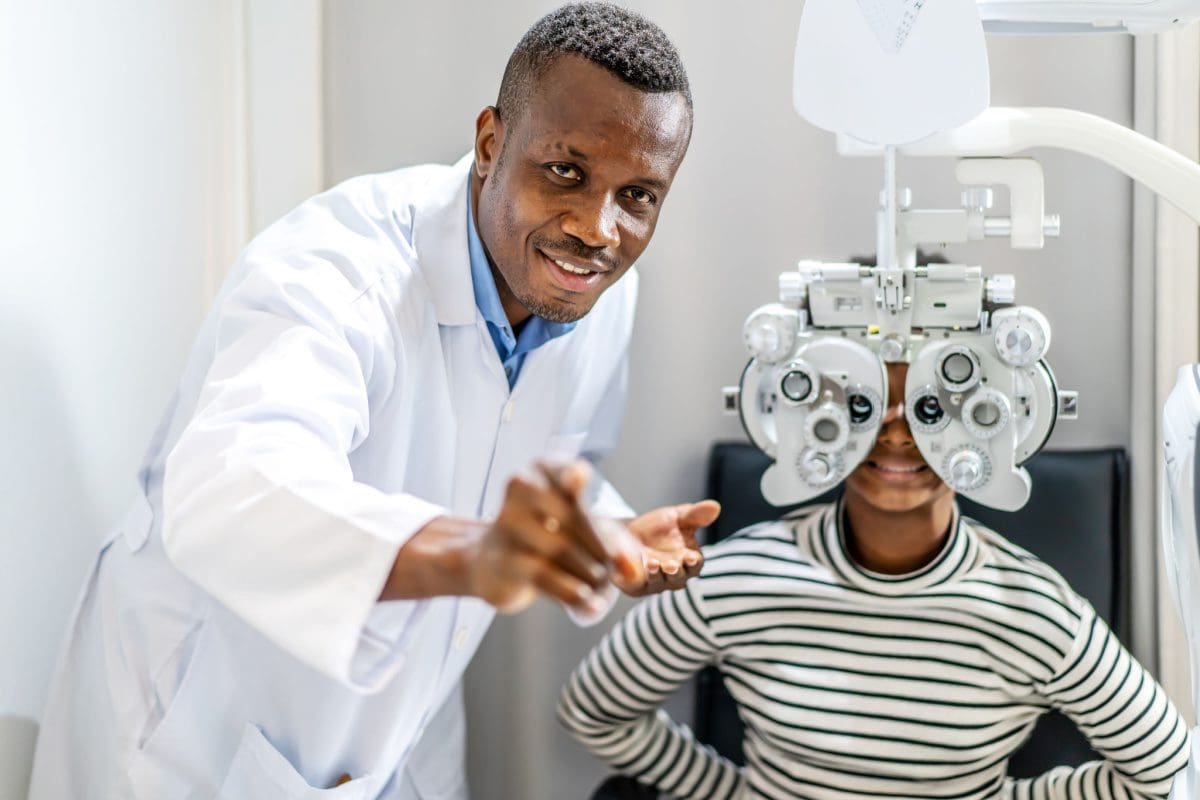Exploring the State-of-the-Art Technologies Utilized for Identifying and Dealing With Eye Conditions
In the realm of ophthalmology, the development of modern technology has actually dramatically boosted the tools available for detecting and treating numerous eye problems. From advanced imaging modern technologies that offer detailed insights right into eye frameworks to robotic-assisted medical procedures that provide exceptional precision, the landscape of eye treatment is constantly developing. With the combination of synthetic intelligence in diagnostics, genetics treatment technologies, and online fact rehab, the possibilities for improving individual results are expanding at a quick speed. The merging of these advanced innovations holds the promise of reinventing the area of ophthalmology, offering new methods for individualized and reliable therapies.

Advanced Imaging Technologies
Advanced Imaging Technologies have actually revolutionized the area of ophthalmology by supplying detailed and specific visualization of the eye structures. Optical Comprehensibility Tomography (OCT) stands apart as a crucial innovation in this realm. OCT utilizes light waves to record high-resolution cross-sectional photos of the retina, enabling the identification of minute architectural modifications. This non-invasive technique help in the very early discovery and monitoring of numerous eye problems such as macular deterioration, diabetic person retinopathy, and glaucoma.
Moreover, Fundus Digital photography is another essential device in ophthalmic imaging. This method involves capturing comprehensive pictures of the rear of the eye, including the retina and optic disc. Fundus Photography helps in recording the progression of eye diseases, examining therapy effectiveness, and informing patients concerning their eye health.

Robotic-Assisted Procedure
Robotic-assisted operations have dramatically progressed the capacities of sensory surgical procedure, introducing a brand-new age of precision and efficiency in dealing with various eye conditions. By integrating robotic modern technology right into operations, ophthalmologists can accomplish exceptional accuracy and control, bring about improved person results.
One of the primary advantages of robotic-assisted surgery in ophthalmology is the improved mastery and stability it provides to cosmetic surgeons. The robot arms can carry out exact movements with a high degree of precision, permitting delicate procedures with very little invasiveness. This level of precision is particularly beneficial in surgical procedures including the retina, where also small errors can have significant implications for a patient's vision.
Furthermore, robotic-assisted medical systems supply real-time imaging and feedback to the doctor, enabling them to make informed decisions during the procedure. This technology improves the surgeon's situational recognition and enables modifications to be made without delay, guaranteeing optimum outcomes for the individual.
Expert System in Diagnostics
With the evolution of innovative modern technologies boosting surgical precision in sensory procedures, the combination of Expert system in diagnostics has emerged as a crucial growth revolutionizing the field of eye treatment. Man-made Knowledge (AI) formulas are being progressively made use of to evaluate intricate data from imaging technologies like optical comprehensibility tomography (OCT) and fundus photography to help in the early detection and accurate medical diagnosis of various eye conditions. These AI systems can effectively determine patterns and anomalies in photos that may not be discernible to discover this the human eye, making it possible for quicker diagnosis and treatment planning.
AI formulas can also anticipate illness development, recommend individualized therapy strategies, and analyze the efficiency of interventions. By simplifying the analysis process, AI not only boosts the performance of eye treatment experts yet additionally enhances person end results by allowing prompt interventions. As AI remains to advancement, its role in diagnostics is expected to expand, offering new opportunities for very early intervention and individualized treatment in the field of ophthalmology.
Genetics Therapy Technologies
In the realm of ophthalmic advancements, current strides in gene treatment technologies have actually stimulated significant interest amongst researchers and medical care professionals alike. Genetics therapy holds enormous pledge in reinventing the therapy of numerous eye problems by targeting the underlying genetic causes. By presenting hereditary material into cells to make up for abnormal genes or to give an absent genetics, genetics therapy provides an individualized technique to dealing with inherited eye problems such as retinitis pigmentosa, Leber hereditary amaurosis, and others that were formerly considered untreatable.

As research in gene treatment proceeds to advancement, the possibility for tailored treatments for a wider series of eye problems expands, using brand-new hope for patients with genetic eye conditions.
Digital Fact Recovery
Digital reality rehabilitation has actually become a cutting-edge technique in enhancing the recovery and rehab procedures for individuals with various aesthetic problems. refractive surgeries in al. By simulating real-world settings via immersive modern technology, digital fact provides an unique platform for vision therapy and rehab. This cutting-edge technique allows people to blog participate in interactive look at here exercises and tasks created to enhance visual skill, deepness understanding, eye control, and overall visual performance
One key benefit of online fact recovery is its capacity to tailor treatment programs based on the specific demands and capacities of each individual. Via real-time comments and tracking, medical care professionals can track development, adjust treatments, and provide customized care to maximize end results. Additionally, online truth modern technology can produce a safe and regulated space for people to practice aesthetic tasks, get rid of challenges, and build self-confidence in a virtual setup before transitioning to real-world scenarios.
Verdict
In conclusion, the improvements in imaging innovations, robotic-assisted surgical treatments, expert system diagnostics, genetics therapy innovations, and virtual truth rehabilitation have substantially boosted the medical diagnosis and treatment of eye problems. retina service near me. These advanced modern technologies have changed the area of ophthalmology, permitting more accurate and efficient procedures. As technology continues to advance, the future of eye care looks encouraging with the capacity for also more innovative remedies to boost patient results
In the realm of ophthalmology, the advancement of innovation has actually substantially enhanced the devices offered for identifying and treating different eye conditions. Fundus Digital photography helps in recording the development of eye diseases, evaluating therapy efficacy, and enlightening patients regarding their eye health and wellness.
Artificial Knowledge (AI) algorithms are being progressively utilized to assess complicated data from imaging modern technologies like optical coherence tomography (OCT) and fundus digital photography to aid in the early detection and exact medical diagnosis of various eye conditions.In verdict, the improvements in imaging innovations, robotic-assisted surgeries, fabricated intelligence diagnostics, gene treatment developments, and virtual truth rehabilitation have substantially boosted the medical diagnosis and treatment of eye conditions. As innovation proceeds to progress, the future of eye care looks promising with the potential for also more innovative services to improve patient results.